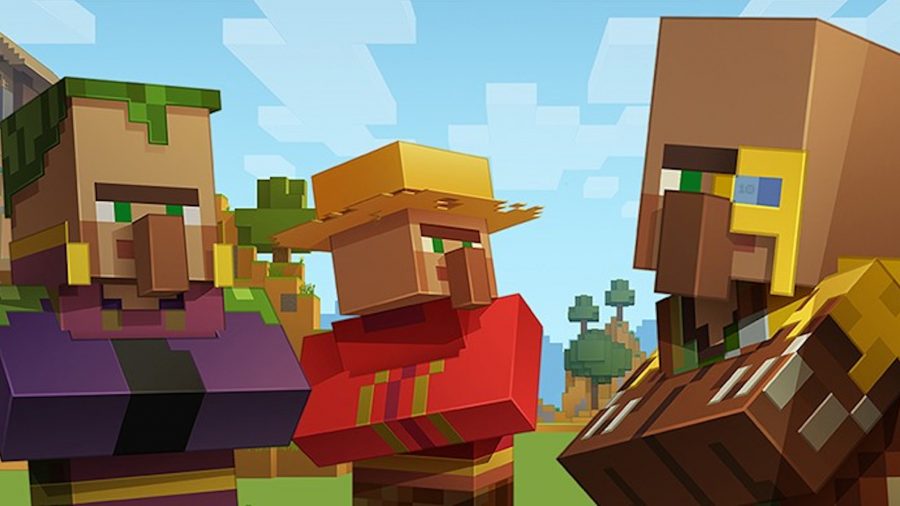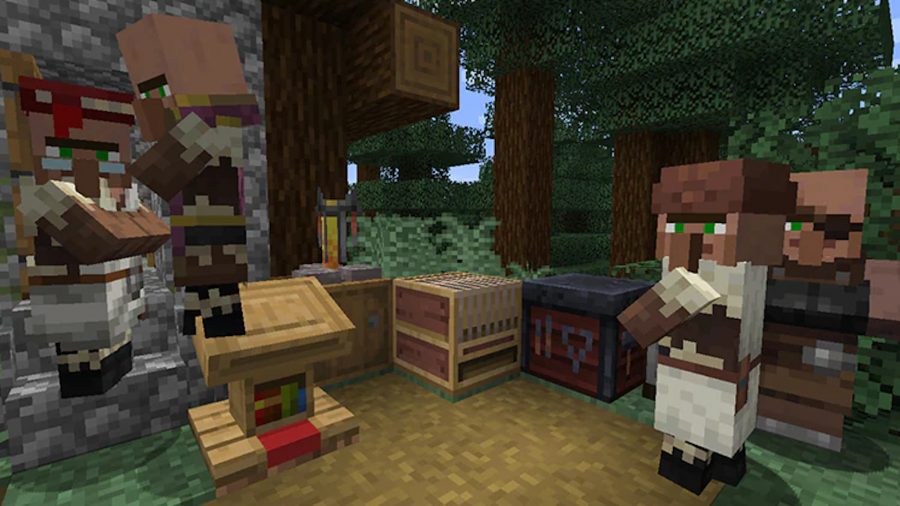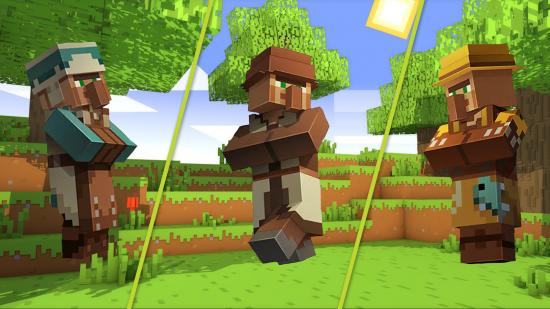Just like in the real world, Minecraft villager jobs are a vital part of the in-game economy. As the villagers work, you can trade with them to get specific items based on their profession. However, not all Minecraft villagers are created equal and different professions will trade different items.
There are a couple of different types of Minecraft villager jobs that you’ll need to know and get to grips with. Each villager has a different profession and will trade different items with you. Trading with them can be a great way to farm different materials, but you are limited to the amount of trades you can make in a day.
Odds are you won’t find a village with all the villager jobs, and there could only be a few residents. So, you can use job blocks to change their profession. This is an easy way to be able to trade the items that you want without having to do too much work. Below, we will explain this process in detail along with everything you need to know about Minecraft villager jobs and trades.
All Minecraft villager jobs
There are a total of 13 Minecraft villager jobs that you can find when you visit a village. Each villager will trade different items based on their specific job title.
Here are all the Minecraft Villager jobs and their trades:
- Armorer: Trades chains, armor, and iron
- Butcher: Trades meats, stew, sweet berries, and kelp blocks
- Cartographer: Trades maps, banner patterns, papers, and compasses
- Cleric: Trades magical items like ender pearls, potion ingredients, and redstone
- Farmer: Trades crops, advanced foods, and brewing ingredients
- Fisherman: Trades fish, campfires, and Enchanted Fishing Rods
- Fletcher: Trades flint, bows, crossbows, and arrows
- Leatherworker: Trades leather items, hides, and scutes
- Librarian: Trades enchanted books, glass, paper, ink, compasses, nametags, quills, and lanterns
- Mason/Stone Mason (Java/Bedrock): Trades terracotta, polished stones, quartz, and clay
- Shepherd: Trades dyes, wool, shears, beds, and paintings
- Toolsmith: Trades bells, harvesting tools, minerals, and axe enchantments
- Weaponsmith: Trades enchanted weapons, bells, and minerals
Aside from the villager jobs listed above, there are technically two other “job titles” you might see in a village: Unemployed and Nitwits.
The Unemployed villagers don’t have a job, but they can start one by claiming an unclaimed job site block. Nitwits, on the other hand, do not have jobs and will never be able to get one.

Minecraft villager job blocks
In Minecraft, job blocks are used to assign villagers a job. You can assign any Unemployed villager a job by placing down the corresponding block listed below. If the villager already has a job, simply break their existing block and replace it with the job block you want them to have.
However, if a villager has already made a trade, you cannot change their profession. So, be sure to have a look around at all the villager jobs before you make your first trade in a new village.
Here are the Minecraft job blocks (and what job they’ll work with):
- Armorer: Blast Furnace
- Butcher: Smoker
- Cartographer: Cartography Table
- Cleric: Brewing Stand
- Farmer: Composter
- Fisherman: Barrel
- Fletcher: Fletching Table
- Leatherworker: Cauldron
- Librarian: Lectern
- Masons: Stonecutter
- Shepherd: Loom
- Toolsmith: Smithing Table
- Weaponsmith: Grindstone
How to craft Minecraft Villager job blocks
Minecraft job blocks can be crafted like any other item. Simply find the recipe for the related block and throw the ingredients into a crafting table to make it. It’s actually quite simple, and nothing else needs to be done to the item.

How to assign a Minecraft villager a job
To assign a villager a job in Minecraft, simply place the corresponding job block in front of them. If they are Unemployed and haven’t made a trade yet, the new job will be accepted. The villager will briefly have a green aura floating around its head when a job has been accepted.
In Java, villagers can only accept a job during the daytime. However, in Bedrock, villagers can accept a job while sleeping. In both versions, for the job to be accepted, the block needs to be placed flat on the ground so that the villager can get to it. Blocks placed on top of items won’t be accepted.
How to unlock a Minecraft villager trade
You are only able to trade with Minecraft villagers around ten times, though it varies depending on their job and if you’re playing Java or Bedrock. Once the limit has been reached, you won’t be able to continue trading and will have to wait for the villager to unlock trading again.
Thankfully, all they have to do is go back to their job site block for a little bit to resupply their items. Villagers can restock their items twice a day, so if you want to trade more than that, you’ll have to wait for a new in-game day.
Be careful with this though, because just like in real life, if an item is in high demand, the price will increase. So, be smart about your trades and your resources. Otherwise, you’ll be paying more for your items!
Now that you’ve got a good idea about all of the Minecraft villager jobs, why don’t you put together a few Minecraft house ideas and make your Minecraft survival server feel like home!
